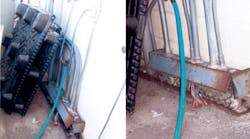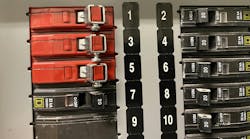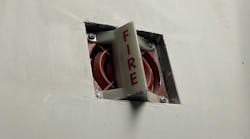How well do you know the Code? Think you can spot violations the original installer either ignored or couldn't identify? Here's your chance to moonlight as an electrical inspector and second-guess someone else's work from the safety of your living room or office. Joe Tedesco, who has a knack for finding shoddy electrical work, did the dirty work and found this mess. Now it's your turn to identify the violation.
Find the Answer
We would need a lot more space than allotted on this page to fully list all of the problems shown at this motor fuel dispensing facility. The following is a list of a few of the most important violations of the 2002 NEC identified by this month's winners — Ray Clarke, P.E., senior project engineer, Pipeline System, Inc., Concord, Calif., and Joey Ray, electrical apprentice, Hayes & Lunsford of Asheville, N.C., Horse Shoe, N.C.
All electrical equipment and wiring installed in a Class I location as classified in 514.3 shall comply with the applicable provisions of Art. 501.
A listed seal is required to be provided in each conduit run that enters or leaves a dispenser or any cavities or enclosures in direct communication therewith. The sealing fitting must be the first fitting after the conduit emerges from the earth or concrete. See 514.9(A) for sealing at dispensers and 514.9(B) for sealing rules at boundaries. A threaded RMC coupling isn't an acceptable first fitting. Many installers misinterpret this rule.
In addition to the grounding rules of Art. 250, this installation must also meet the requirements of 501.16 and 514.16.
The gutter in this installation also violates the substantial construction requirements of 366.10(B) and the securing and supporting requirements for rigid conduit in 344.30 aren't met.




